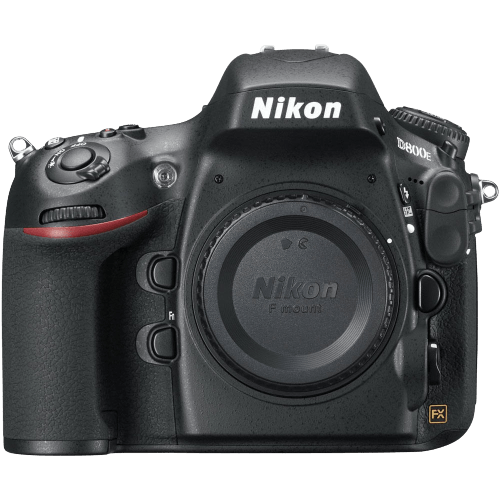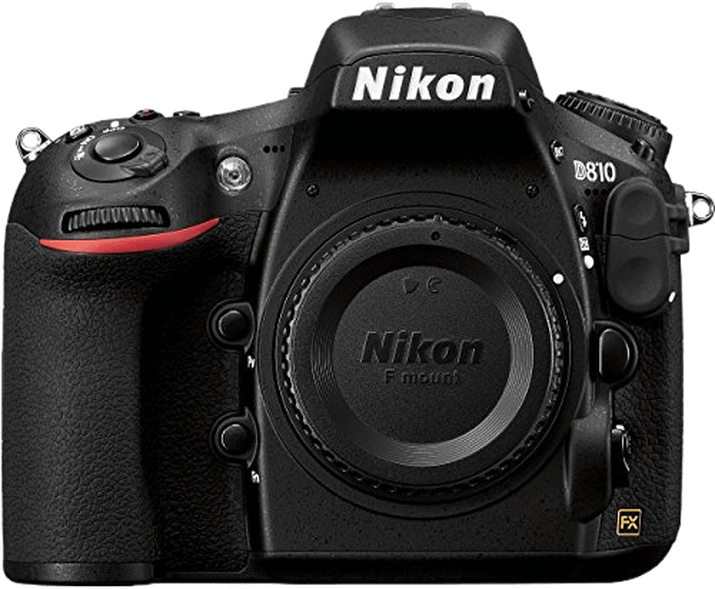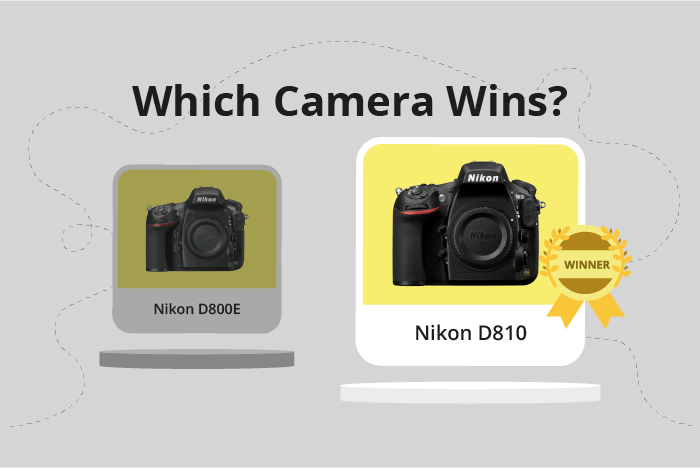Nikon D800E vs D810 Comparison
Nikon D800E

Nikon D810

The Nikon D810 edges out the Nikon D800E with a score of 72/100 compared to 69/100. Both cameras share the same DSLR type, launch price of $3300, and dimensions of 146 x 123 x 82mm. However, the D810, released in 2014, is an upgrade over the D800E, released in 2012.
The D810 is superior in terms of weight, as it is lighter at 980g compared to the D800E’s 1000g. This makes it more comfortable to carry around during long shooting sessions. On the other hand, the D800E does not have any significant advantages over the D810.
Considering the higher score and lighter weight, the Nikon D810 is the better choice between the two cameras, while the Nikon D800E is still a reliable option for those seeking a slightly older model.
Nikon D800E vs D810 Overview and Optics
The Nikon D810 slightly edges out the Nikon D800E in terms of optics, scoring 76/100 compared to the D800E’s 74/100. Both cameras share several key specifications, including their 36.3-megapixel resolution, CMOS sensor type, full-frame sensor size, Nikon F lens mount, and lack of image stabilization.
The D810 surpasses the D800E in a few aspects that contribute to its higher score. With a shooting speed of 5 frames per second (fps), the D810 is faster than the D800E’s 4 fps. This difference allows the D810 to capture fast-moving subjects more effectively. The D810 also benefits from an upgraded processor, the Expeed 4, which enables faster image processing and better overall performance. Additionally, the D810’s sensor has a DXOMARK score of 97, one point higher than the D800E’s score of 96, indicating a marginally better sensor quality.
In contrast, the D800E does not have any specific advantages over the D810 in terms of optics. Both cameras have the same megapixel count, sensor type, sensor size, and lens mount. The D800E’s lower score is solely due to its slightly inferior performance in shooting speed, processor, and sensor quality compared to the D810.
Given these comparisons, the Nikon D810 is the better choice for photographers who prioritize optics and overall performance. Its faster shooting speed, improved processor, and marginally better sensor quality provide advantages over the Nikon D800E. However, the differences between the two cameras are minimal, and both cameras are still excellent choices for photographers seeking high-quality optics.
Nikon D800E vs D810 Video Performance
The Nikon D810 outperforms the Nikon D800E in video capabilities, with a video score of 70/100 compared to the D800E’s 57/100. Both cameras share some common video specifications, such as Full HD maximum video resolution and 1920 x 1080 maximum video dimensions. Additionally, both cameras have built-in time-lapse functionality.
The winning camera, the Nikon D810, surpasses the D800E with its higher maximum video frame rate of 60fps, compared to the D800E’s 30fps. This advantage allows the D810 to capture smoother and more detailed videos, especially in fast-paced situations, making it a better choice for videographers who require high-quality footage.
While the Nikon D800E does not offer any significant advantages over the D810 in terms of video capabilities, it still maintains a respectable video score of 57/100, indicating that it can produce decent quality videos for casual users or photographers who occasionally shoot video.
Thus, the Nikon D810 is the clear choice for those prioritizing video capabilities, as its higher video score and maximum frame rate of 60fps provide smoother and more detailed footage. On the other hand, the Nikon D800E may still be suitable for users who do not require top-tier video performance but still want a camera that can produce acceptable video quality.
Nikon D800E vs D810 Features and Benefits
The Nikon D810 outperforms the Nikon D800E with a feature score of 59/100, having a 2-point lead over the D800E’s 57/100. Both cameras share common specifications, including a 3.2-inch screen size, absence of a touchscreen and flip screen, and lack of GPS and Bluetooth capabilities. However, both cameras come with Wi-Fi connectivity.
The D810 surpasses the D800E with its higher screen resolution of 1,229,000 dots, compared to the D800E’s 921,000 dots. This difference provides the D810 with a sharper and more detailed display, resulting in a better user experience while reviewing images and navigating menus.
On the other hand, the D800E does not have any specific advantages over the D810 in terms of features. Both cameras have the same set of features, with the D810 having a slight edge in screen resolution. Therefore, the D800E falls short in comparison to the D810.
Taking into account the features of both cameras, the Nikon D810 emerges as the winner due to its higher screen resolution, which significantly enhances the display quality. The Nikon D800E, while sharing many similar specifications, does not offer any additional benefits over the D810. Consequently, the D810 proves to be the superior choice between these two cameras.
Nikon D800E vs D810 Storage and Battery
The Nikon D810 outperforms the Nikon D800E in storage and battery with a score of 79/100, compared to the D800E’s 71/100. Both cameras share common specifications, such as having two memory card slots and compatibility with SD/SDHC/SDXC and Compact Flash memory cards. Additionally, both utilize the EN-EL15 battery type and lack USB charging capabilities.
The D810’s superiority in this category stems from its longer battery life, providing 1200 shots per charge, as opposed to the D800E’s 900 shots. This significant difference in battery life allows photographers to capture more images without needing to replace or recharge the battery.
While the D800E trails behind in battery life, it compensates with its compatibility with UHS-I SD cards, which offer faster data transfer rates. This feature is beneficial for photographers who require quick access to their images.
Considering the storage and battery aspects, the Nikon D810 emerges as the better option due to its extended battery life. However, the Nikon D800E still holds an advantage with its compatibility with UHS-I SD cards, making it a suitable choice for those prioritizing faster data transfer speeds.
Alternatives to the Nikon D800E and D810
Are you still undecided about which camera is right for you? Have a look at these popular comparisons that feature the Nikon D800E or the Nikon D810:

